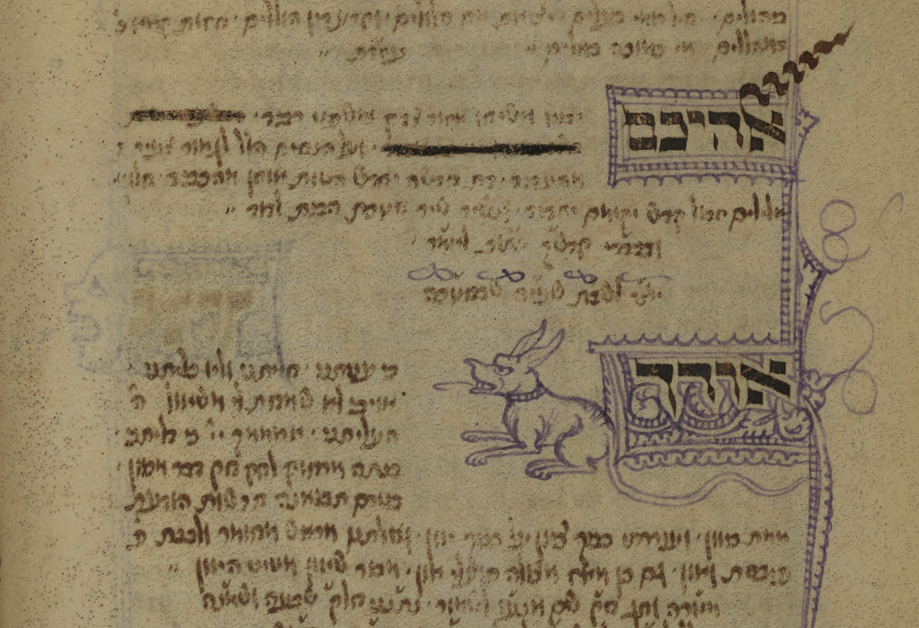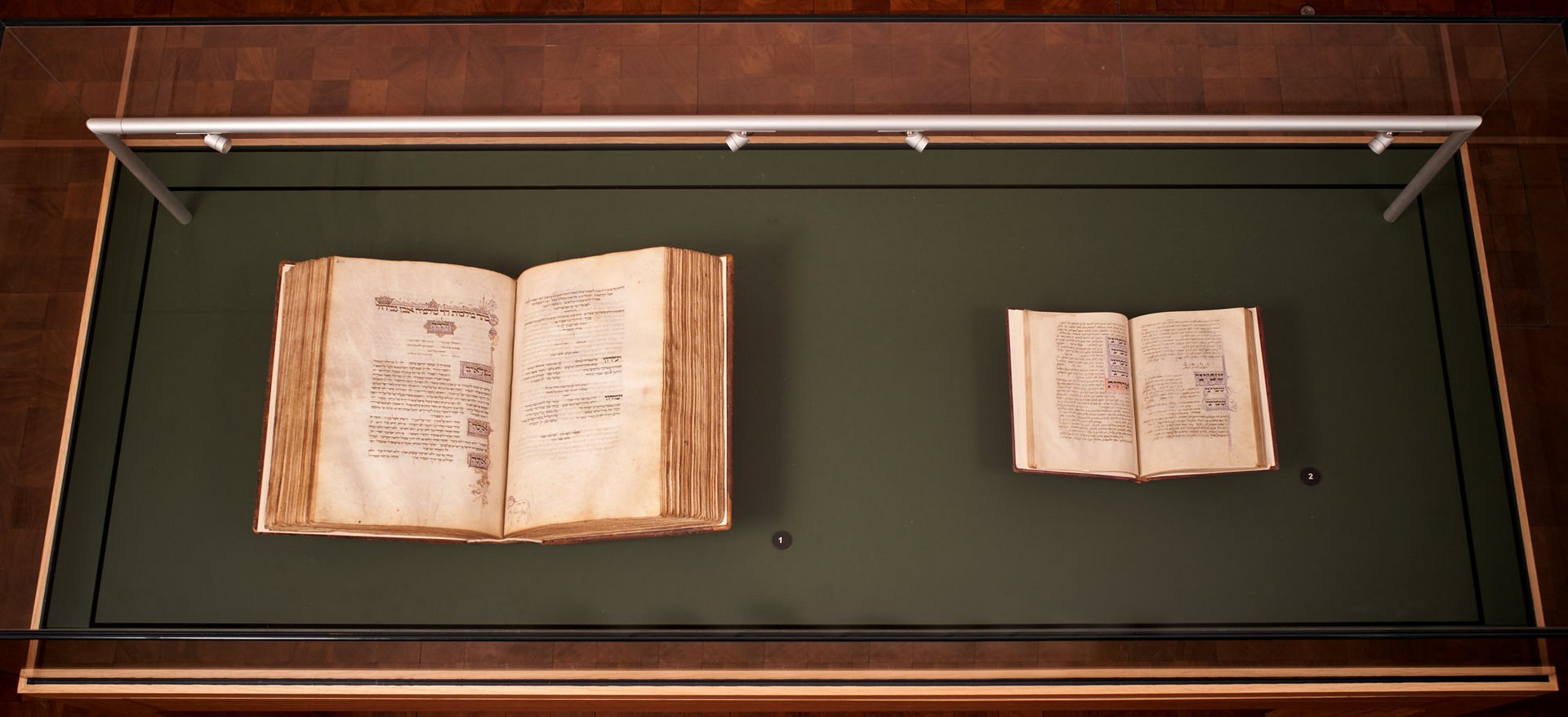
Most of the books in this exhibition are discussed in the context of an encounter between manuscripts in relation to a particular theme. However, the National Library of Israel and the Braginsky Collections both hold manuscripts by a late medieval artist by the name of Joel ben Simeon. In this room two manuscripts, one from each collection, are discussed in detail, giving an insight into the various angles from which Hebrew manuscripts can be studied and appreciated.

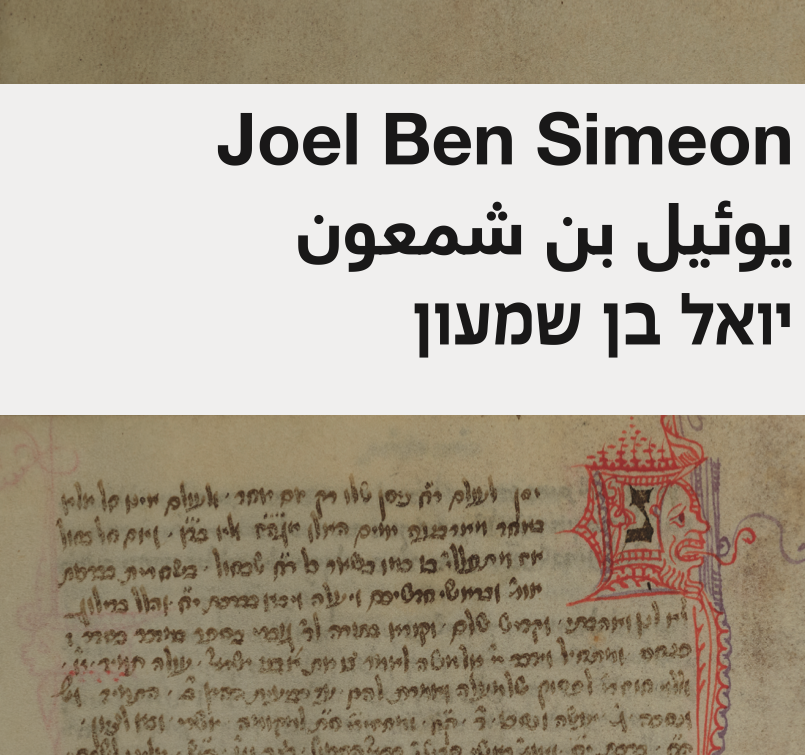
Arguably the most famous Jewish scribe and artist of the Middle Ages is Joel ben Simeon (also known as Fayvesh Ashkenazi). He was probably born in Cologne around 1420, although his family were forced to flee to nearby Bonn when Jews were expelled from Cologne in 1424. The Jews were driven out of Bonn in 1445, after which the young Joel may have lived in Southern Germany, perhaps in Basel, for a few years. He moved across the Alps to Italy no later than 1449, where he began working as an itinerant scribe for various wealthy Italian patrons. On a few occasions he returned to Germany, mostly to work for a patron by the name of Jacob ben Seligman. He must have died sometime after 1490. Today, thirty-four of his manuscripts remain, including twelve signed by him and twenty-two unsigned but attributed to him, based on an analysis of their artistic style. He worked both as a scribe and an artist, both individually and together with others.
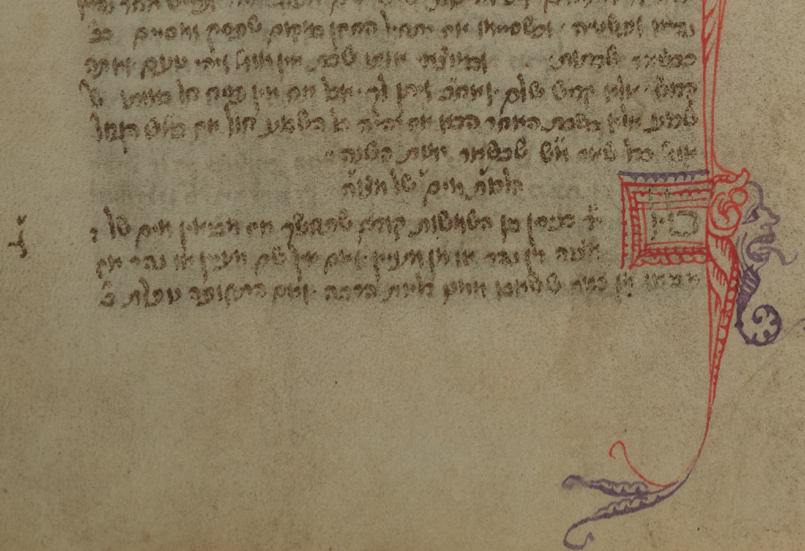
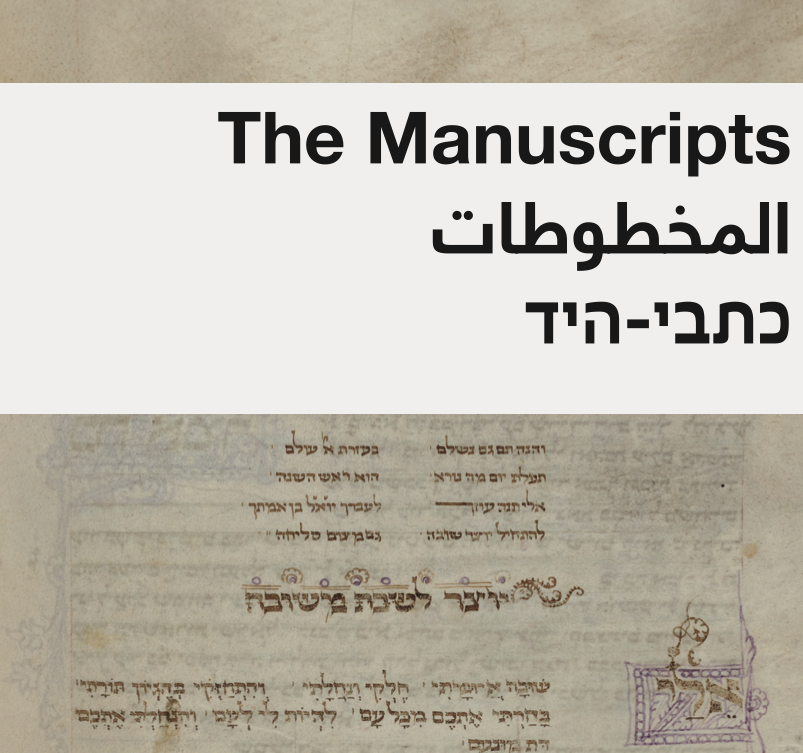
Both the National Library of Israel and the Braginsky Collection hold manuscripts by Joel ben Simeon, two of which are examined here in detail. The Braginsky Collection manuscript, copied by an unidentified scribe in 1450, was introduced recently as the Veneto Siddur, Sefer Minhagim. It contains daily and festival prayers, together with a book of customs. Scholars believe that Joel ben Simeon illuminated this Siddur around 1470. The Moskowitz Mahzor at the National Library of Israel takes its name from the Moskowitz family of New York, who donated it to the library in 1970. It contains prayers for various festivals. While it is undated, it is believed to have been copied and decorated by Joel ben Simeon late in his career, sometime between 1470 and 1490. He reveals his name in a note on fol. 238b: "Lo, here ends the prayer for the day of Awe called Rosh Hashanah. Oh God, do endow with strength Thy servant, son of the handmaid, Joel, that he might write the order of Atonement as well".
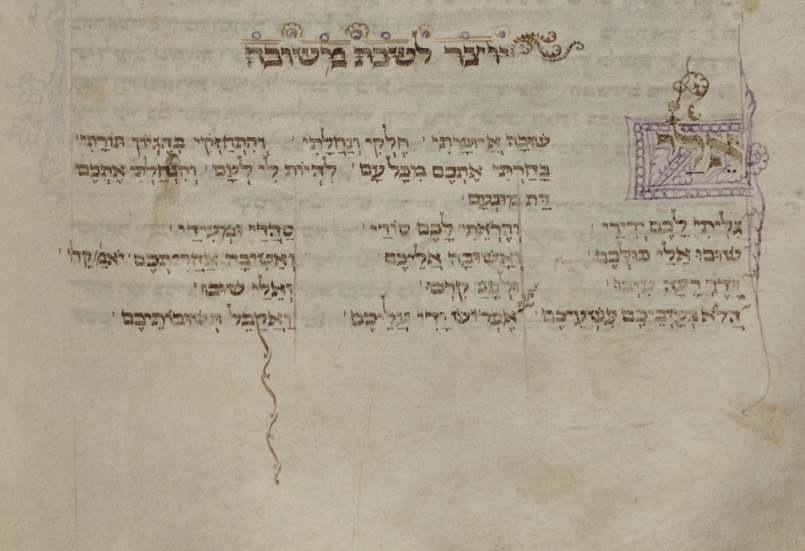
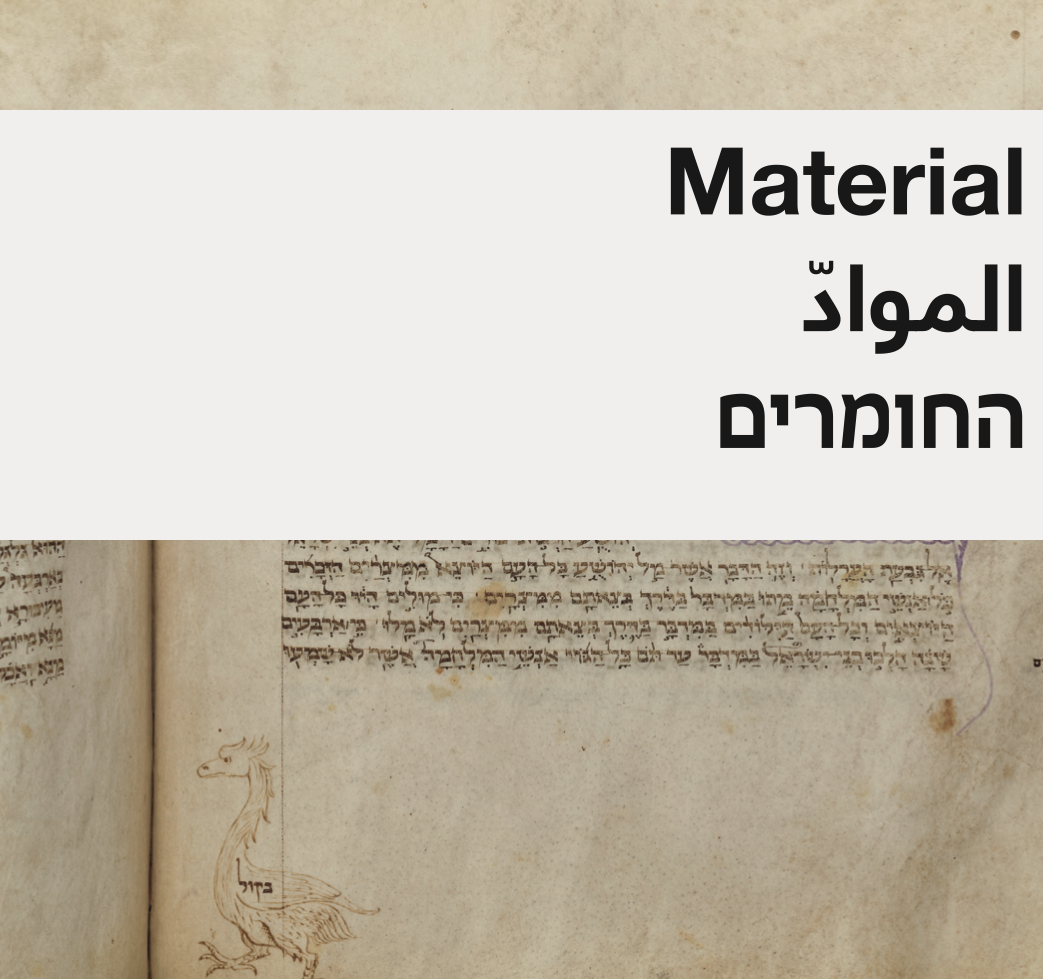
Both manuscripts were copied on parchment, which is created by soaking hides in unslaked lime several times, washing these in clean water, stretching them on a frame, scraping away the hair and flesh and then polishing both sides to create two writing surfaces. Both manuscripts show traces of hair follicles on the hair side. The two volumes of the Veneto Siddur, bound in modern brown leather bindings, comprise 122 leaves; five leaves are missing. The scribe's German origins are apparent from the folding of four parchment leaves together to create eight leaves, or sixteen pages. Five double leaves per gathering was common in Italy. The Moskowitz Mahzor has 376 leaves and is bound in an old brown leather binding. Scribes usually added the first word or words of the following quire at the bottom of the final page of each quire, to ensure the binder maintained the correct order when binding. In the Veneto Siddur these were cut away, but in the Moskowitz Mahzor they are still present and even decorated.
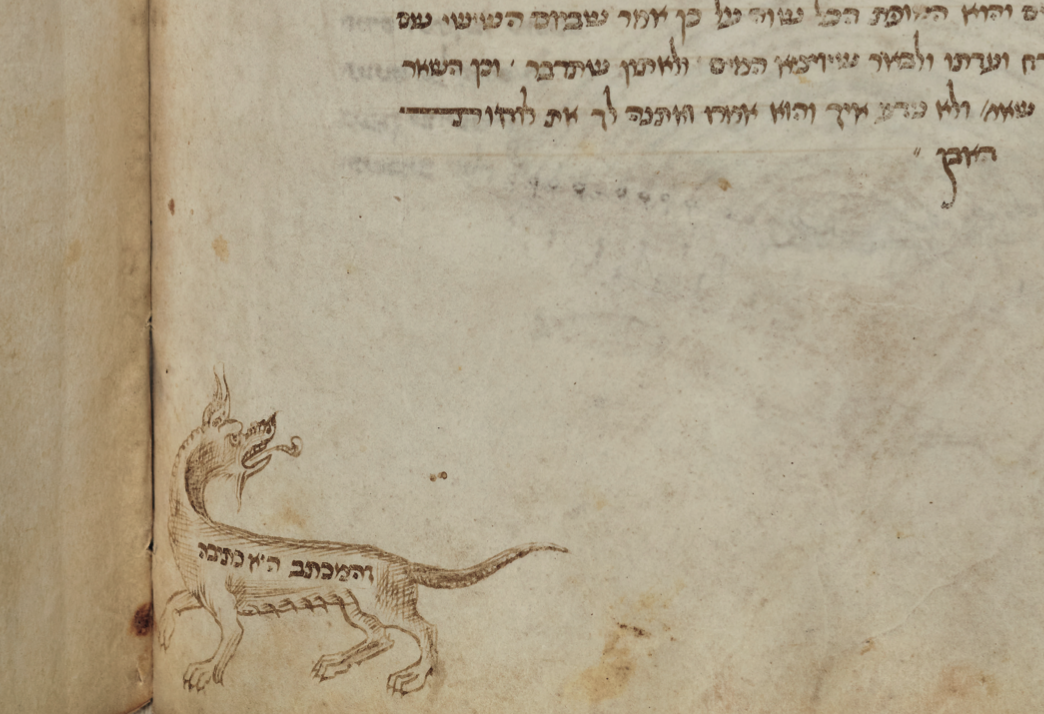
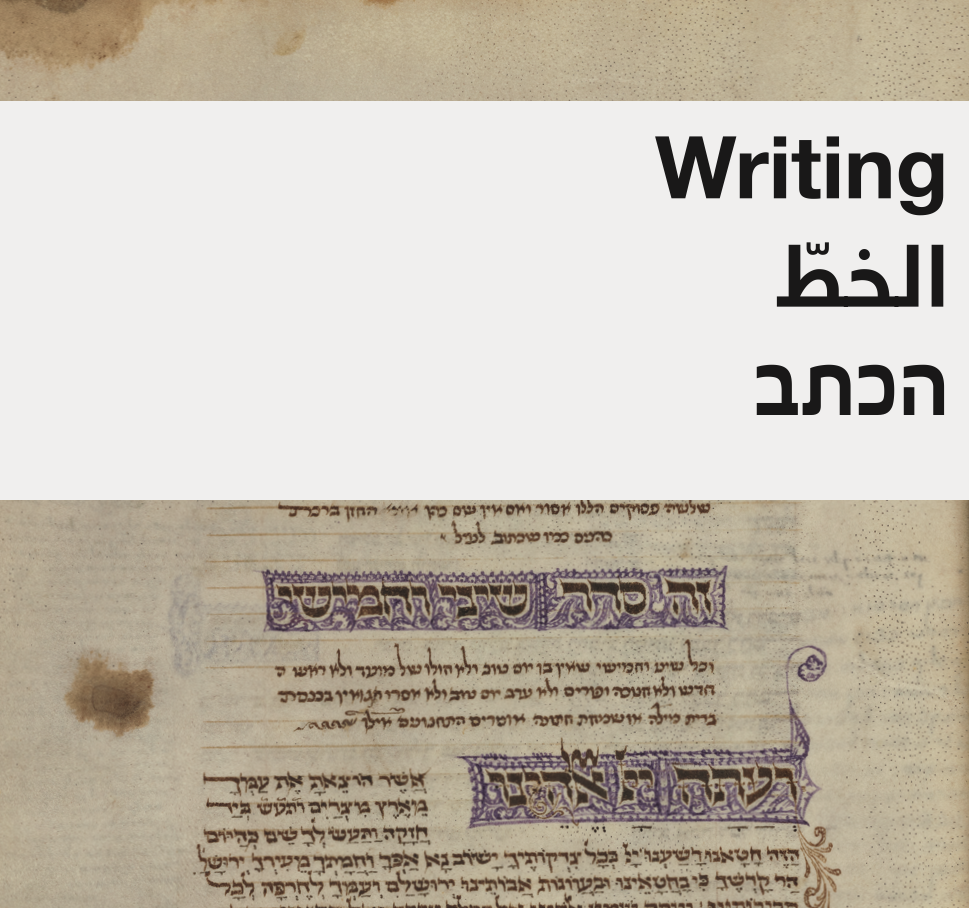
Scribes rule lines as a guide for writing, mostly using a hard point, plummet, or pen.
These lines are ruled on one or both sides of the parchment and on the folded or unfolded double leaves. To space the ruled lines, small holes are usually made in the parchment. In the Veneto Siddur traces of blind and occasional plummet ruling are discernible in the margins, whereas the Moskowitz Mahzor has horizontal pale ink and vertical hard point ruling.
Medieval scribes adhered to a traditional script, rather than their own personal handwriting style. Nonetheless, a range of scripts are found, even in a single region. These usually reveal the scribe's geographical origins. In Ashkenaz and Italy, scribes wrote with quills, producing broad horizontal and thinner vertical strokes. Joel ben Simeon did not copy the Veneto Siddur himself, but in both manuscripts, chapter headings and opening words appear in square Ashkenazic script, and vocalized prayer texts in a more current Ashkenazic semi-cursive script. Both scribes used carbon-based inks of different shades.

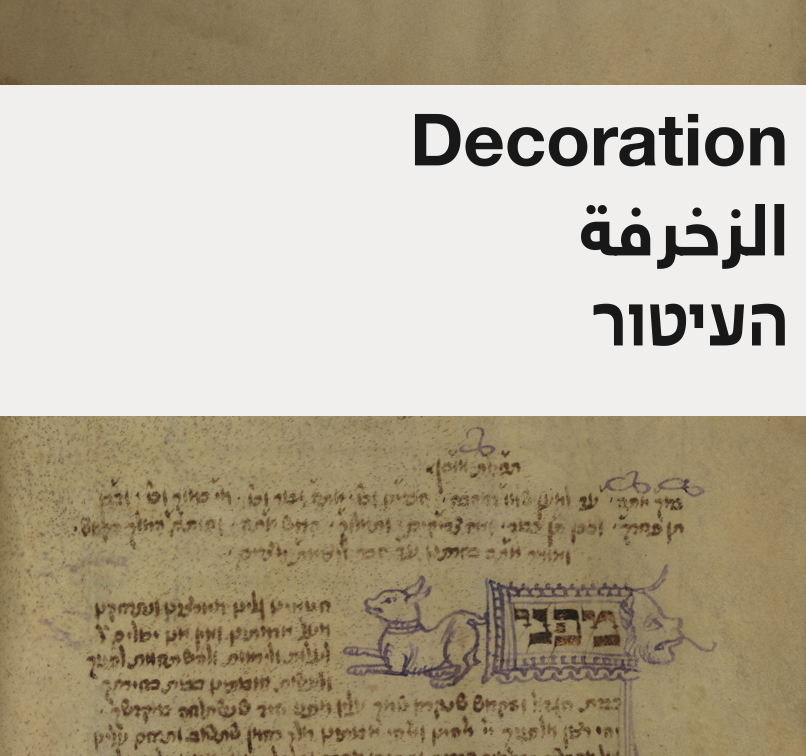
Joel ben Simeon is best known for his richly illuminated, multicolored Haggadot. These display an enormous thematic variety and showcase his remarkable talent. A considerable number of his manuscripts, however, were not illuminated, but decorated with imaginative penwork in different colored inks, mostly red, blue and purple. The Veneto Siddur and the Moskowitz Mahzor are examples of this.
The Veneto Siddur has more than 500 such pen-and-ink drawings, including masks and faces, banderoles, anthropomorphic animals, dogs, birds, crowns, castles and dragons, in elaborate floral and foliate surrounds. The Moskowitz Mahzor has an even more elaborate and exquisite decorative program of many hundreds of pen-and-ink decorations, with a particular emphasis on animals.
Among the most striking motifs in Joel ben Simeon's manuscripts are some rather amusing human masks. They appear many times in both manuscripts displayed here, as well as several other manuscripts by his hand. Most of the masks in the Veneto Siddur and the Moskowitz Manzor are integrated into ornamental frames surrounding opening words.
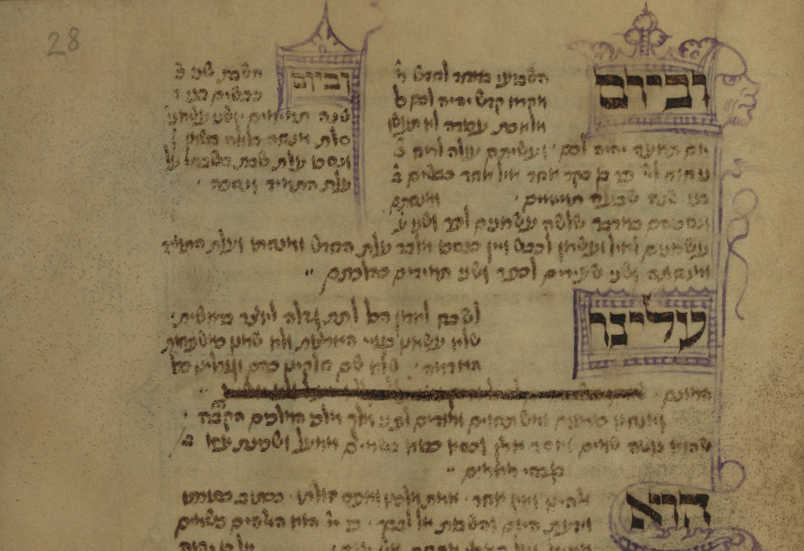
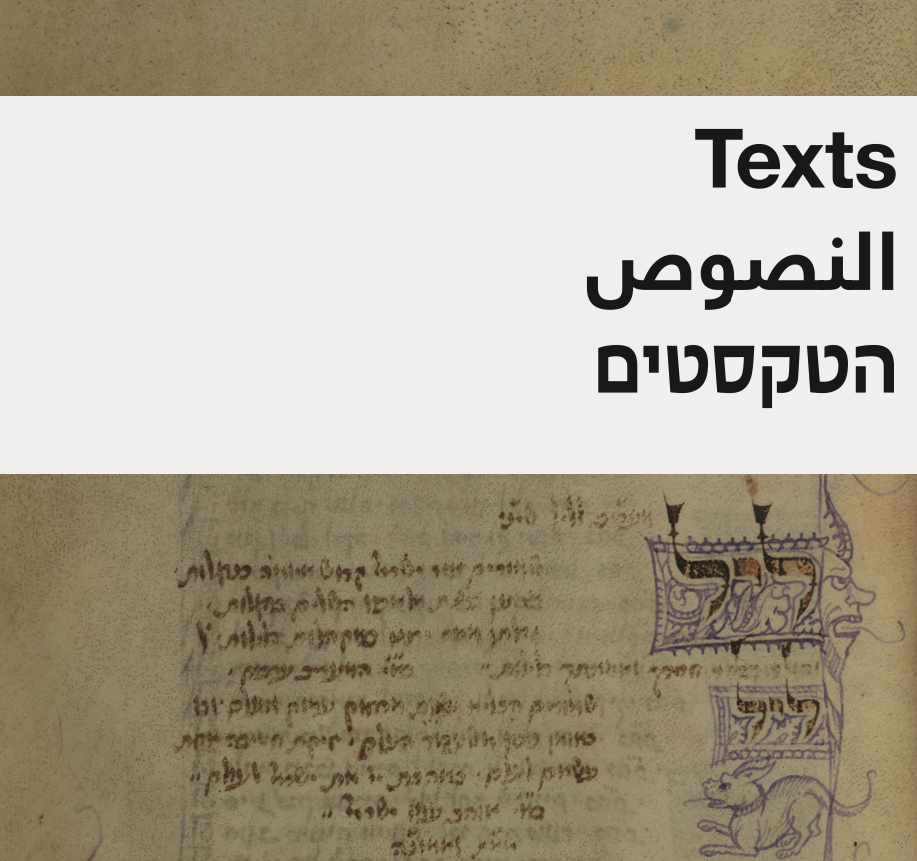
Among the manuscripts attributed to Joel ben Simeon, three contain daily prayers and four contain festival prayers. The text of Sefer Minhagim, which is included in the Veneto Siddur, also appears in another manuscript attributed to Joel ben Simeon that forms part of the Braginsky Collection but is not shown in this exhibition. Sefer Minhagim provides fascinating descriptions of ritual customs practiced by German-Jewish immigrants in Northern Italy in that period. Samuel of Ulm's authorship of the text is based on information from a single manuscript, now held by the Jesselson Foundation. Its contents are clearly inspired by the teachings of Jacob Moellin (1360-1427) of Mainz, who was one of the leading Ashkenazic scholars of Jewish law. The daily and Sabbath prayers in the Veneto Siddur reflect the Ulm rite. The Moskowitz Mahzor follows the old rite of the Jews of Italy, commonly referred to as Minhag Roma. It contains both daily and festival prayers, including many rare piyyutim, biblical readings, a Passover Haggadah, and a number of other texts.
